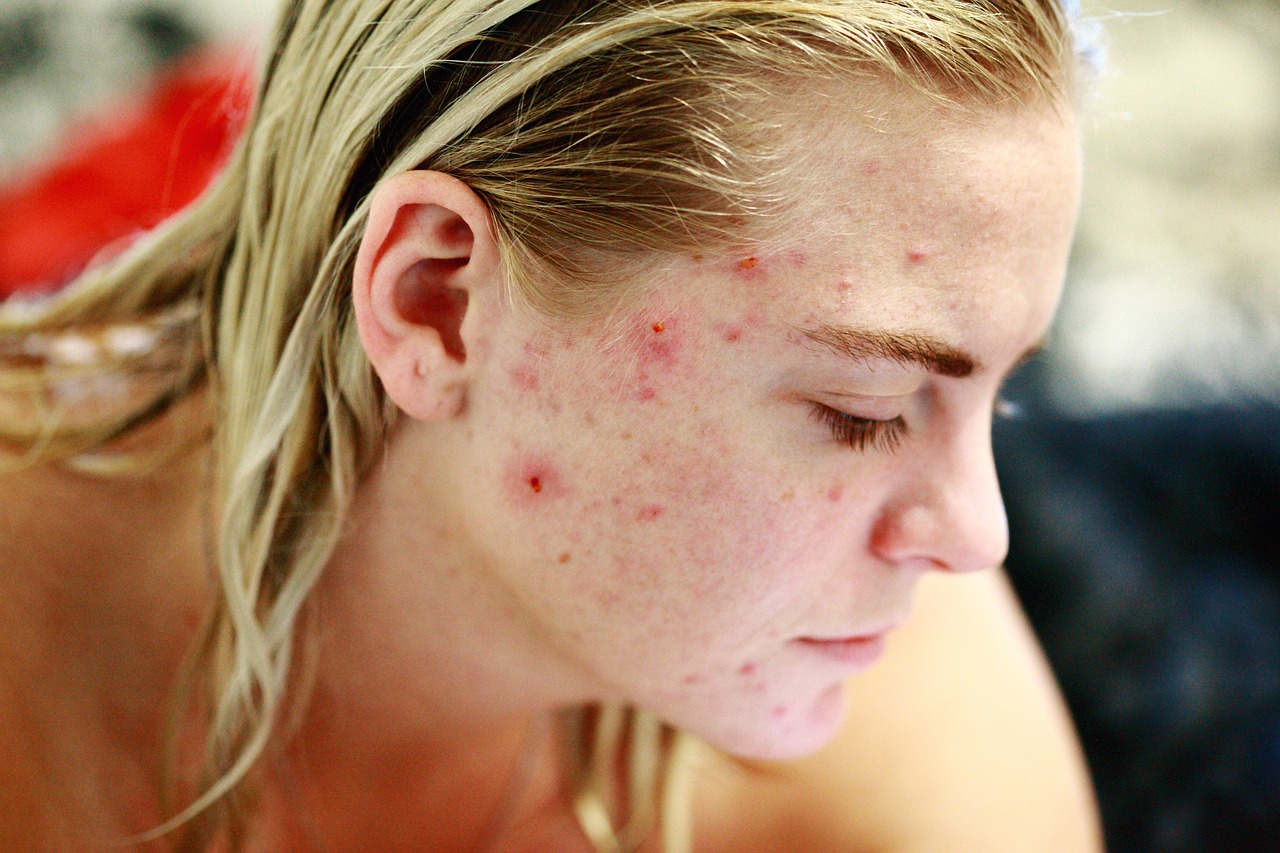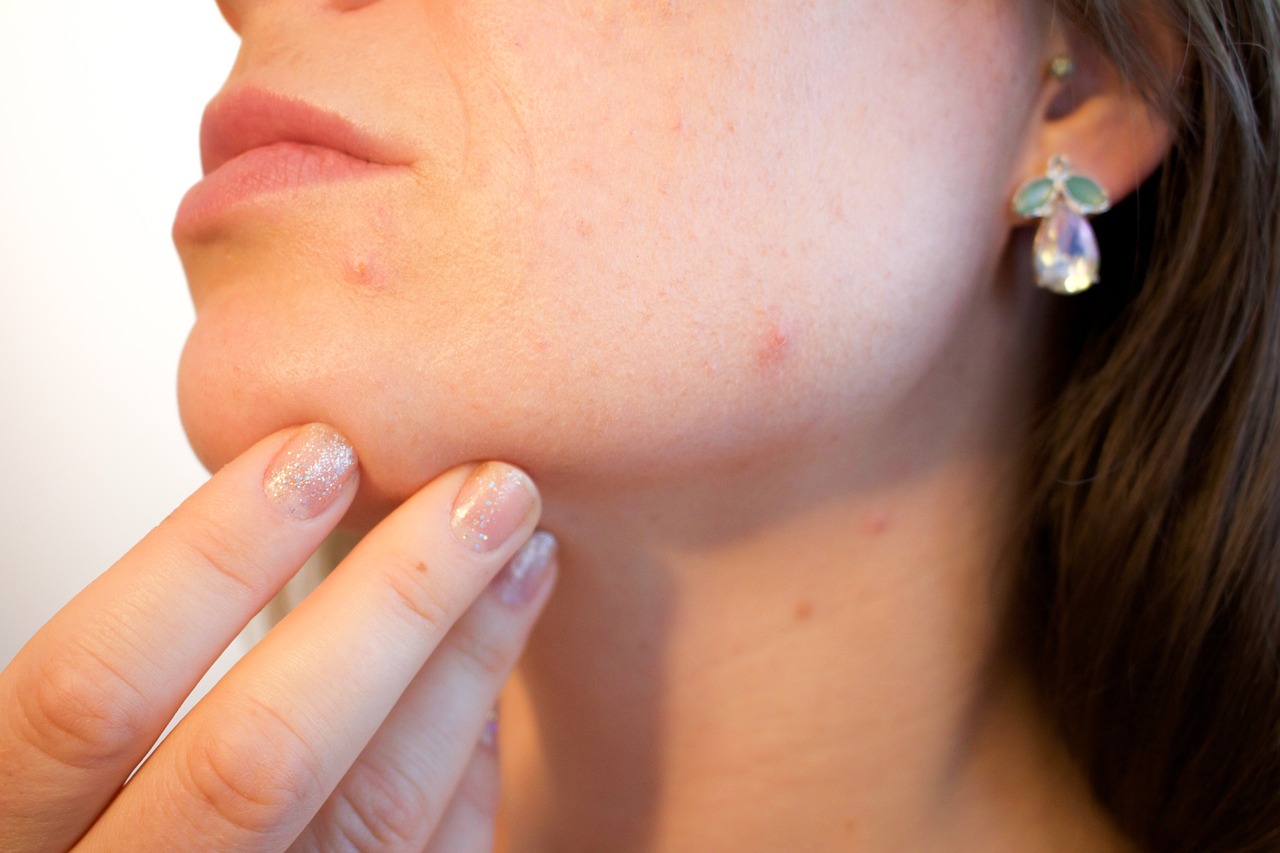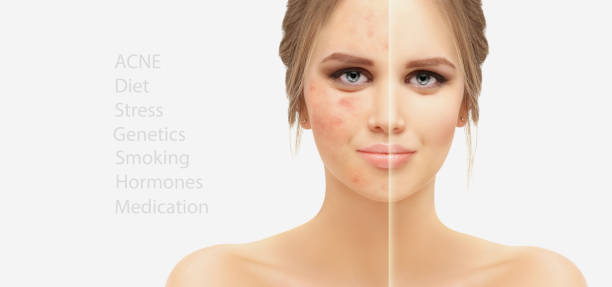
Lifestyle Hacks to Reduce Hormonal & Stress Acne
Hormonal and stress-induced acne can feel like your skin is rebelling from the inside out. Unlike occasional pimples caused by surface-level buildup, these breakouts run deeper—both literally and figuratively. If you’ve ever noticed stubborn jawline breakouts right before your period, or flare-ups during a stressful exam week, you’ve likely experienced the effects firsthand.
These types of acne often seem immune to typical skincare routines and require a more holistic approach. In this post, we’re diving into the lifestyle changes and daily habits that go beyond cleansers and spot treatments. From your plate to your pillowcase, your hormones and stress levels are influenced by more than just what you put on your face.
This blog dives into the natural, everyday lifestyle hacks that help reduce acne from the inside—no prescriptions or 12-step routines required. By supporting your hormonal balance and managing stress, you'll give your skin the foundation it needs to stay clear and calm. Let’s explore the habits that make a difference.
And if you haven’t already, explore the foundational Acne & Clear Skin Treatments , including Daily Skincare Routine to Prevent Acne Flare-Ups and IPL Acne Reduction: Venus Versa for Stubborn Breakouts.
Understanding Hormonal and Stress-Related Acne
What Causes Hormonal Acne?

AlexanderGrey via Pixabay
Hormonal acne is triggered by fluctuations in hormones like androgens and estrogen. These changes increase oil production and inflammation in your skin, clogging pores and creating the perfect storm for breakouts. It typically presents as cystic, painful bumps deep under the skin, often concentrated around the lower cheeks, jawline, and chin.
Common hormonal shifts include:
Puberty, where hormone surges spike sebum production.
Menstrual cycles, particularly around ovulation and the luteal phase.
Pregnancy and postpartum, due to rapid hormonal fluctuations.
Polycystic ovary syndrome (PCOS), which often results in elevated androgens.
Stopping or starting birth control, which can temporarily throw hormones out of balance.
Unlike other acne types, hormonal acne may not respond well to over-the-counter products alone, especially when the root cause is internal.
How Stress Triggers Acne

Stress ramps up your body’s production of cortisol—a hormone that can spike sebum (oil) production and encourage inflammation. Cortisol also contributes to a dysregulated immune system, making it harder for your body to fight off acne-causing bacteria like C. acnes.
When you're stressed, your skin also takes longer to heal, and you're more prone to picking or touching your face, which exacerbates the issue. Chronic stress can create a cycle: stress causes acne, acne causes stress, and the loop continues.
Common Signs You’re Dealing with Internal Acne Triggers
Deep, painful cystic acne that lingers longer than typical pimples.
Jawline or chin breakouts, which often indicate hormonal involvement.
Flare-ups that follow your cycle or stress patterns.
Acne that resists typical skincare treatments, or seems immune to “clean” routines.
Recognizing these signs early helps you choose more effective, whole-body strategies instead of just chasing surface-level fixes.
Hack #1 - Balance Blood Sugar and Hormones Through Diet
Limit Dairy and High-Glycemic Foods
High-glycemic foods (like white bread, sugary cereals, candy, soda) cause rapid spikes in blood sugar, which in turn increases insulin. Elevated insulin levels boost oil production and androgen activity—two key players in hormonal acne.
Milk, especially skim, has been linked to acne due to hormones it contains. Try switching to plant-based alternatives like unsweetened almond or oat milk to see if your skin responds positively.
Include Anti-Inflammatory Foods
Fighting acne with food means eating in a way that lowers systemic inflammation. Anti-inflammatory ingredients calm internal flare-ups, which reflect as fewer breakouts.
Omega-3 rich foods like salmon, chia seeds, and flaxseed reduce inflammation.
Leafy greens are rich in antioxidants and support liver detox (important for hormone balance).
Spices like turmeric and ginger naturally reduce inflammation and support gut health.
Eat More Zinc, Vitamin A, and Probiotics
Zinc supports immune function and has antibacterial properties against C. acnes.
Vitamin A helps regulate skin cell turnover and oil production.
Probiotics, found in yogurt, kefir, sauerkraut, and kimchi, restore gut balance, which research increasingly ties to skin health.
Diet won’t cure hormonal acne overnight, but over time, it can reduce the frequency and severity of breakouts, especially when combined with other lifestyle strategies.
Hack #2 - Master Stress Management Techniques
Practice Daily Mindfulness or Meditation
Mental wellness is deeply intertwined with your skin health. Practicing daily mindfulness, even for just 10 minutes, can significantly lower your cortisol levels. Meditation doesn’t have to mean sitting cross-legged in silence—try guided sessions through apps like Calm, Headspace, or Insight Timer.
You can also incorporate mindfulness into routine activities: focus on your breathing while brushing your teeth, enjoy your meals without distractions, or take a few moments of silence before you start work.
Try Breathwork, Journaling, or Nature Walks
Breathwork is a powerful and often underrated stress-relief tool. A few deep belly breaths can shift your body from fight-or-flight into rest-and-digest mode, which is key for hormonal regulation.
Journaling helps process emotions, while nature walks combine movement with calming scenery. Just 20 minutes in a green space can lower stress hormone levels, improve mood, and indirectly support clearer skin.
Prioritize Quality Sleep
Your body repairs itself while you sleep—including your skin. Aim for 7–9 hours of quality sleep per night. Create a wind-down routine: dim the lights an hour before bed, put your phone away, drink a warm magnesium or chamomile tea, and try reading instead of scrolling.
Lack of sleep leads to increased inflammation, higher cortisol levels, and imbalanced hormones—all of which are known acne culprits. Making sleep a non-negotiable part of your routine can be one of the most impactful things you do for your skin.
Hack #3 - Create an Acne-Safe Workout Routine
Avoid Heavy Makeup While Exercising
Wearing full coverage foundation or thick makeup to the gym might give you a confidence boost, but it could be sabotaging your skin. Sweat opens up your pores, and when it's mixed with oils and makeup, it can clog them more easily—leading to fresh breakouts just hours after your workout.
Opt for bare skin or use non-comedogenic, breathable products if you prefer light coverage. A tinted moisturizer with SPF or a mineral-based BB cream can be more forgiving than full foundation.
Always Cleanse Post-Workout
After your workout, try to cleanse your face as soon as possible—even if it's just with a micellar water wipe or gentle toner. Leaving sweat and bacteria on your skin for too long can cause flare-ups, especially around the hairline, forehead, and chest.
If you work out frequently and can’t always shower immediately, pack travel-size versions of a gentle, sulfate-free cleanser, clean towel, and moisturizer in your gym bag. Don’t forget to also change out of your workout clothes—body acne is a real thing and often thrives in sweat-soaked, tight fabrics.
Choose Breathable Clothing and Fabrics
Friction and sweat from synthetic fabrics like polyester can trap heat and bacteria against the skin. Instead, wear workout clothes made from moisture-wicking, breathable materials like bamboo, cotton blends, or technical fabrics that help your skin stay dry.
Also, wash your workout clothes and towels regularly using fragrance-free, gentle detergents to avoid irritation that can lead to breakouts, especially on your back and shoulders.
Hack #4 - Review Your Supplement Routine & Medication
Understand What Might Be Triggering Breakouts
Sometimes, the very things we take to boost our health can unintentionally disrupt our skin. Supplements like biotin, commonly taken for hair and nail growth, have been linked to breakouts in some people because they can interfere with the body’s absorption of vitamin B5—a key nutrient for skin barrier health.
Other culprits include whey protein, especially in powders used for muscle-building. Whey is derived from dairy, which can spike insulin and IGF-1, both known to contribute to acne. If you're seeing increased breakouts after starting a supplement, take note.
Opt for Skin-Supportive Supplements
Instead of blindly adding supplements, choose ones known to help regulate hormones and inflammation:
Zinc: Anti-inflammatory and great for wound healing.
Omega-3 fatty acids: Balance oil production and reduce internal inflammation.
DIM (Diindolylmethane): Supports estrogen metabolism, helpful for hormonal acne (consult a healthcare provider before use).
Probiotics: Help balance gut health, which directly influences inflammation and hormone regulation.
Check Prescription Medications
Certain prescription meds—like steroids, lithium, and some birth control pills—can trigger or worsen acne. If you're noticing breakouts and have recently started a new medication, speak with your doctor or pharmacist. Never stop a prescribed medication without medical guidance, but an alternative may be available if acne is affecting your quality of life.
Maintaining a log of your skin's reaction to any changes in your supplement or medication routine can help uncover patterns that may otherwise go unnoticed.
Hack #5 - Rebuild Your Skin Barrier From the Outside In
Understand the Importance of Your Skin Barrier
The skin barrier acts like a bodyguard for your face. It protects you from bacteria, allergens, and moisture loss. When this barrier is damaged—either from over-exfoliating, using harsh products, or neglecting hydration—it becomes easier for acne to take hold.
A compromised skin barrier shows up as redness, stinging, sensitivity, and yes—more breakouts. That’s why rebuilding and protecting your skin barrier should be just as important as cleansing or treating acne.
Use Barrier-Strengthening Ingredients
Incorporate ingredients that help replenish and fortify the skin:
Ceramides: Lipids that naturally occur in your skin, ceramides help retain moisture and reinforce the skin’s protective layer.
Niacinamide: A form of vitamin B3, niacinamide not only calms inflammation and controls oil but also strengthens the skin barrier.
Panthenol (Vitamin B5): Hydrates, soothes, and accelerates skin healing.
Hyaluronic Acid: Attracts and holds moisture in the skin, keeping it plump and hydrated.
Look for these ingredients in your moisturizers, serums, and toners. They help restore resilience to your skin, making it more resistant to hormonal flare-ups and external irritants.
Be Gentle With Your Skincare
Avoid over-cleansing, using hot water, or aggressively rubbing your face with towels. These habits, while seemingly harmless, can break down the skin barrier over time.
Stick with gentle, pH-balanced cleansers, and pat your skin dry with a clean, soft towel. When exfoliating, opt for chemical exfoliants like lactic acid or polyhydroxy acids (PHAs) which are milder than scrubs.
Always patch test new products, especially if your skin is already sensitive or compromised. When your barrier is strong, your skin will be less reactive and better equipped to handle hormonal changes and stress.
Hack #6 - Regulate Your Environment for Better Skin
Air Quality and Indoor Pollution
Did you know that the air inside your home could be irritating your skin? Indoor air pollutants—like dust, mold spores, and volatile organic compounds (VOCs) from cleaning products or paint—can trigger inflammation and worsen sensitive, acne-prone skin. Add in dry air from air conditioning or heaters, and your skin might be dealing with more than it can handle.
To combat this, consider using a HEPA air purifier in your bedroom, especially where you sleep 6–8 hours a night. Keeping windows open for ventilation (when air quality allows) and using houseplants like spider plants or snake plants can also help purify the air naturally.
Pillowcases, Towels, and Cell Phones
Anything that touches your face regularly should be cleaned often. Your pillowcase collects oil, bacteria, dead skin cells, and product residue nightly. If you're not washing or changing it every few days, you're sleeping in a breakout zone.
Wash pillowcases and face towels at least twice a week using fragrance-free, hypoallergenic detergent.
Clean your phone screen daily with alcohol wipes or a microfiber cloth to prevent bacteria transfer from device to face.
If you wear glasses, don’t forget to clean where the frames touch your cheeks and temples.
Humidity and Temperature Fluctuations
Extreme temperatures—whether it’s dry winter air or excessive summer sweating—can aggravate acne. Dry air can strip your skin barrier, while hot, humid air increases oil production.
If you live in a dry climate, consider adding a humidifier to your bedroom to maintain ideal moisture levels for your skin. In hot climates, blot sweat gently instead of wiping it away aggressively, and use breathable fabrics to minimize irritation.
Creating a skin-friendly environment isn’t just about your routine—it’s about making sure your space isn’t undermining your progress.
Hack #7 - Sync Skincare with Your Hormonal Cycle
Understand Your Skin’s Cycle
Hormones fluctuate throughout your menstrual cycle, and your skin reflects these changes. Understanding what’s happening during each phase can help you adjust your skincare routine to better prevent flare-ups.
Follicular Phase (Days 1–13): Estrogen rises, and your skin may appear more balanced and radiant. This is a great time to use active ingredients like AHAs or retinoids (if tolerated).
Ovulation (Around Day 14): Oil production may increase slightly. Use lightweight, oil-controlling moisturizers and keep your skin clean.
Luteal Phase (Days 15–28): Progesterone spikes, leading to increased sebum, inflammation, and clogged pores. Breakouts are most likely to occur here. Focus on calming and anti-inflammatory products—think niacinamide, azelaic acid, and clay masks.
Menstruation (Days 1–7): Your skin might be drier and more sensitive. Stick to gentle cleansers, barrier creams, and hydration-focused routines.
By tailoring your skincare based on your cycle, you can support your skin’s changing needs instead of fighting against them.
Track and Anticipate Flare-Ups
Use a period tracker or skin journal to spot patterns in your acne. If you consistently break out a few days before your period, preemptively switch to more anti-acne products like salicylic acid or benzoyl peroxide in the days leading up.
This proactive approach minimizes the severity of breakouts and helps you feel more in control—especially important when hormonal acne makes your skin feel unpredictable.
Be Flexible and Patient
Your skin isn't the same every day, and that’s okay. Syncing your skincare doesn’t require perfection—it just asks you to listen and respond instead of sticking rigidly to a one-size-fits-all plan. The more in tune you are with your body’s rhythms, the better you can support your skin from the inside and outside.
Your Clear Skin Takeaway
Hormonal and stress-induced acne might feel out of your control, but your daily habits can quietly shift the tide. By making small, consistent changes in your lifestyle—from diet to skincare, from sleep to mindfulness—you give your body and skin the best environment to heal and thrive.
While no single hack is a silver bullet, together they create a powerful foundation that not only supports clear skin but overall wellness. Pay attention to what your body is telling you, take time to de-stress, and don’t underestimate the value of sleep, gentle skincare, and clean habits.
Need more structure in your acne-fighting routine? Dive deeper into Daily Skincare Routine to Prevent Acne Flare-Ups, where we break down the exact steps to follow morning and night. Or, if you’re curious about high-tech treatment options, check out IPL Acne Reduction: Venus Versa for Stubborn Breakouts to learn how light therapy can complement your lifestyle changes.

Acne doesn’t define you—but taking care of your skin can empower you. Stick with it, be kind to yourself, and trust the process.
FAQ: Lifestyle Acne Prevention
How long does it take to see improvement from lifestyle changes?
Changes like diet, stress management, or sleep habits may take a few weeks to show visible improvements in your skin. Be consistent and give your body time to adjust.
Can stress alone cause acne?
Yes, chronic stress can trigger hormonal responses—particularly increased cortisol—that lead to inflammation and excess oil production, both of which contribute to breakouts.
Is hormonal acne only a problem during your period?
Not always. Hormonal imbalances can also occur due to PCOS, birth control changes, pregnancy, or even chronic stress.
Are there natural supplements that help hormonal acne?
Yes, zinc, omega-3s, probiotics, and DIM are popular natural options, but always consult with a healthcare provider before starting a new supplement.
Should I still follow a skincare routine if I’m focusing on lifestyle changes?
Absolutely. Lifestyle and skincare go hand in hand. For best results, combine both. You can follow our Pillar Guide: Acne & Clear Skin Treatments for a complete roadmap.
Is it possible to eliminate hormonal acne entirely through lifestyle?
For some, yes—especially if the root cause is stress or dietary-related. Others may need medical guidance or treatment in combination with these hacks. It depends on the individual.
Does sleep really make that much of a difference?
Yes. Poor sleep increases cortisol, slows healing, and can make you more prone to breakouts. Quality sleep is one of the most underrated beauty tools.
What are the top products to use alongside these lifestyle hacks?
Check out our top recommended solutions in the Acne & Clear Skin Treatments guide for both drugstore and advanced options.
Ready for a Real Glow-Up?
Hormonal and stress-related breakouts can feel like a never-ending cycle—but they don’t have to be your normal. If you're tired of skin that doesn’t listen to your products, it might be time to go deeper. Our personalized Acne & Clear Skin Treatments are designed to support your skin from the inside and out—so you can finally feel calm, clear, and confident.
References for this Information
American Academy of Dermatology Association. (n.d.). Hormonal acne: Causes, types, and treatments. Retrieved July 19, 2025, from https://www.aad.org/public/diseases/acne/causes/hormonal
Bowe, W. P., Joshi, S. S., & Shalita, A. R. (2010). Diet and acne. Journal of the American Academy of Dermatology, 63(1), 124–141. https://doi.org/10.1016/j.jaad.2009.07.043
Chiu, A., Chon, S. Y., & Kimball, A. B. (2003). The response of skin disease to stress: Changes in the severity of acne vulgaris as affected by examination stress. Archives of Dermatology, 139(7), 897–900. https://doi.org/10.1001/archderm.139.7.897


Comments
0 comments